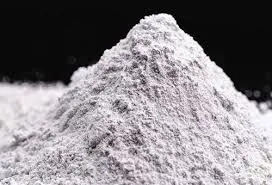
Dec . 12, 2024 01:28 Back to list
hpmc gelation temperature
HPMC Gelation Temperature Understanding the Properties and Applications
Hydroxypropyl methylcellulose (HPMC) is a widely used cellulose derivative that finds applications in food, pharmaceuticals, cosmetics, and construction industries. One of the critical properties of HPMC is its gelation temperature, which plays a significant role in its performance and functionality. This article explores the concept of HPMC gelation temperature, its influencing factors, and its implications for various applications.
What is Gelation Temperature?
Gelation temperature refers to the temperature at which a polymer solution transitions from a liquid state to a gel state. For HPMC, this process is primarily influenced by its molecular weight, degree of substitution, concentration, and the presence of other solutes or solvents. At elevated temperatures, hydrogen bonds between HPMC molecules become weaker, allowing them to move freely. However, as the temperature decreases or as concentration increases, these interactions strengthen, leading to the formation of a gel network.
Factors Affecting Gelation Temperature
1. Molecular Weight The molecular weight of HPMC is a significant determinant of its gelation behavior. Higher molecular weight HPMC tends to form gels at higher temperatures due to the increased entanglement of the polymer chains, which enhances the viscosity and stability of the gel.
2. Degree of Substitution HPMC can have varying degrees of methyl and hydroxypropyl substitutions. The degree of substitution affects the hydrophilicity and solubility of HPMC, influencing the gelation temperature. Generally, a higher degree of substitution leads to lower gelation temperatures.
3. Concentration The concentration of HPMC in a solution also affects its gelation temperature. As the concentration increases, gelation occurs at higher temperatures. This phenomenon is attributed to the increased interactions and overlapping of polymer chains in a concentrated solution.
hpmc gelation temperature

4. Additives and Solvents The presence of salts, acids, or other solvents can significantly alter the gelation temperature of HPMC. For instance, adding salts can screen electrostatic interactions, leading to lower gelation temperatures. Solvents that promote hydrogen bonding can also modify gelation behavior.
Implications of Gelation Temperature
Understanding the gelation temperature of HPMC is crucial for its application in various fields. In the pharmaceutical industry, HPMC is commonly used as a controlled-release agent. The ability to manipulate its gelation temperature allows for the design of drug delivery systems that can release active ingredients at specific rates over time.
In the food industry, HPMC is utilized as a thickening and gelling agent. Knowledge of its gelation temperature helps manufacturers achieve desired texture and mouthfeel in products such as sauces, desserts, and dairy items. The ability to form stable gels at specific temperatures is vital for product quality and consumer satisfaction.
Moreover, in the construction industry, HPMC acts as a binder and enhances the workability and adhesion of cement-based materials. The gelation properties of HPMC contribute to the performance of mortars and tile adhesives, ensuring durability and stability in construction applications.
Conclusion
HPMC gelation temperature is a fundamental property that influences its performance across various industries. By understanding the factors affecting gelation and its practical implications, manufacturers can effectively utilize HPMC to achieve desired outcomes in their products. As research continues into the properties and functionalities of HPMC, its applications are likely to expand, offering innovative solutions across multiple sectors.
-
Versatile Hpmc Uses in Different Industries
NewsJun.19,2025
-
Redispersible Powder's Role in Enhancing Durability of Construction Products
NewsJun.19,2025
-
Hydroxyethyl Cellulose Applications Driving Green Industrial Processes
NewsJun.19,2025
-
Exploring Different Redispersible Polymer Powder
NewsJun.19,2025
-
Choosing the Right Mortar Bonding Agent
NewsJun.19,2025
-
Applications and Significance of China Hpmc in Modern Industries
NewsJun.19,2025







